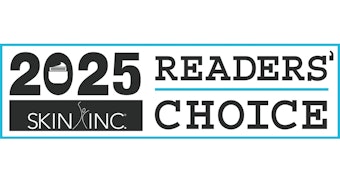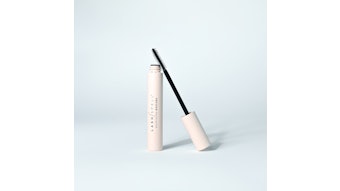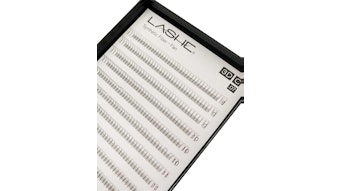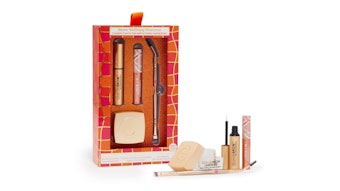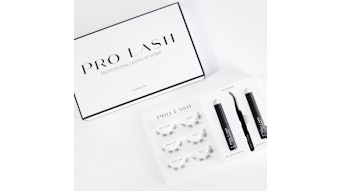
Makeup is a particularly tricky space because if a client feels empowered to do it themselves...they will certainly try, as the over-saturated beauty market has shown us. An increasingly fraught economy has led to consumers seeking to save a buck where they can, and has been putting pressure on cosmetology schools to squeeze out more pros than can get a quality education within the expedited timelines, with market ramifications on both sides. As makeup pros fight for their space and success in a fickle market and strained industry, here's what we can bank on (for now, at least.)
1. Quality is an issue.
 Some schools use a business model that rely on churning new pros out as quickly as possible, which can mean establishing poor practices as corners get cut, like storing used and clean utensils together, or potentially using unclean tools on clients.Image by Natali / Adobe Stock.
Some schools use a business model that rely on churning new pros out as quickly as possible, which can mean establishing poor practices as corners get cut, like storing used and clean utensils together, or potentially using unclean tools on clients.Image by Natali / Adobe Stock.
A lack of vetting in experience for makeup academies can lead to less than stellar training, which translates to less than prepared licensed professionals giving less than desired results.
Education is the name of the game: experienced beauty pros should be counseling clients on red flags to look out for, while also keeping a robust network of professionals they can refer clients with specific needs to. Additionally, if there's someone less experienced and you can nudge them in the right direction, do so! A negative reflection in the industry reflects us all, and can hurt mass consumer trust in pros.
2. You've heard it on the skin care side, but: multifunctionals!
 The quality and array of multifunctional solutions offered is larger than ever before as clients seek personalized, luxurious results.Image by Romario len / Adobe Stock.
The quality and array of multifunctional solutions offered is larger than ever before as clients seek personalized, luxurious results.Image by Romario len / Adobe Stock.
Consumers are seeking more bang for their buck, and skin care-infused cosmetics are the answer to that prayer, especially when it comes to those pursuing safe and "clean" ingredients, or those who want their longevity journey reflected in every piece of their beauty routine.
Brands like Make Up For Ever have embraced both the multifunctional and clean beauty movements with their array of multifunctional products, as well as their Clean For Ever List, which has their list of approved ingredients, determined to be effective and safe after rigorous in-house testing.
3. Beware of supply chain issues; watch your tried and true products.
 Watch what your preferred ingredients are doing, how they're sourced, what products they go in and how they interact with common skin care ingredients, like AHAs.Image by kerdkanno / Adobe Stock.
Watch what your preferred ingredients are doing, how they're sourced, what products they go in and how they interact with common skin care ingredients, like AHAs.Image by kerdkanno / Adobe Stock.
Listen, it's a crazy world out there, and though the market is flooded, it's still particularly rough for those straining against the confines of their budgets. If you're considering a brand change or a new brand has piqued your interest, be sure to gather all the information you can on ingredients, including not only what's used but also where it's sourced. Suppose ethical sourcing is a priority for you. In that case, this is important to know, but even if it's not, ensuring quality ingredients is important, especially for your clients with reactive, sensitive skin.
If one of your faves has disappeared off the market, be careful not to jump into a torrid affair with another seemingly-perfect product in your haste for a speedy replacement. Do your due diligence so you don't pay the price later.
4. The industry's staying in the left lane.
 It can be discouraging to see the market turn fickle on something we love or identified with. On the bright side? Barrier repair, oral care and inclusivity seem to have exited the revolving door of passing fads.Image by Fatima / Adobe Stock.
It can be discouraging to see the market turn fickle on something we love or identified with. On the bright side? Barrier repair, oral care and inclusivity seem to have exited the revolving door of passing fads.Image by Fatima / Adobe Stock.
That's to say, things are moving fast and they're not looking to slow down anytime soon. What's in vogue today is not guaranteed for tomorrow. Today, it's all AI-generated personalized routines, influencers as taste-makers and clean beauty, but all of these movements are fomenting counter-movements and scrutiny that are also growing in momentum.
Each day is a new day, so if you are considering a trend, make sure it's true to your brand's identity, sustainable for long-term use and that you have a solid, concrete plan for incorporating it into your business. That's to say, if you are going to hop onto a bandwagon, make sure you can ride that baby all the way to the bank.




